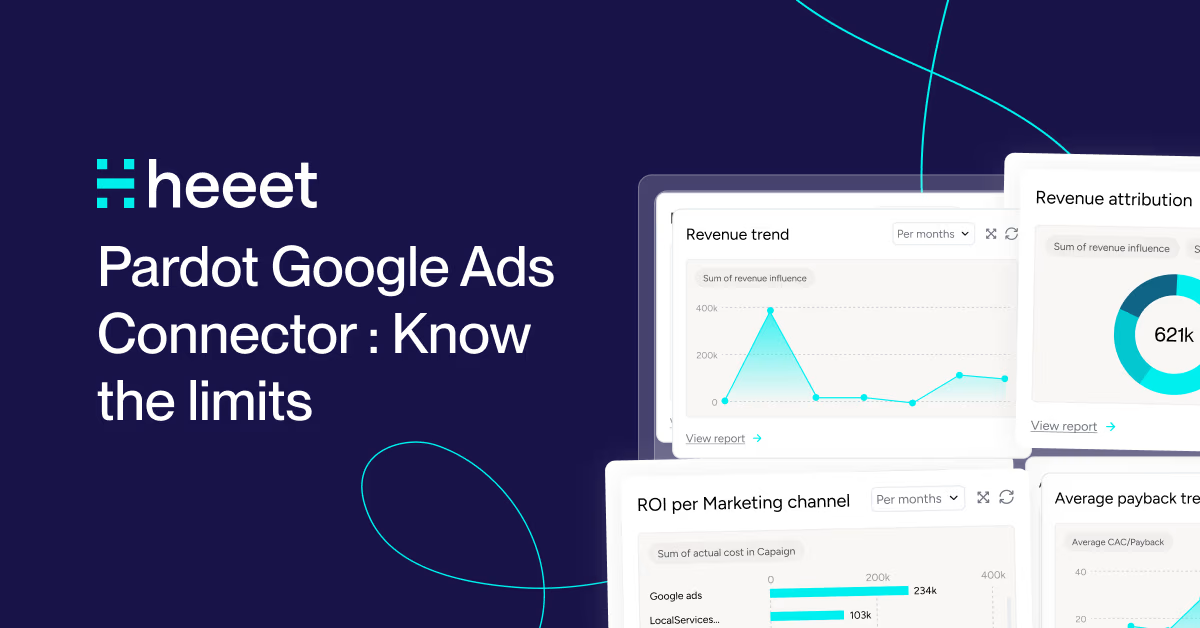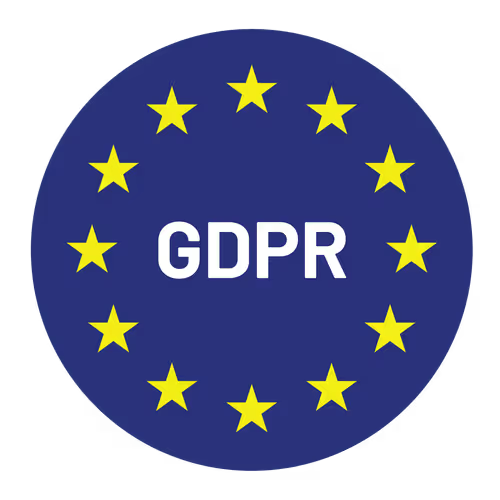Read time :
Pardot Google Ads Connector : Know the limits


Salesforce Account Engagement (formerly Pardot) includes a built-in Google Ads connector that's straightforward to implement. However, while this native integration covers the basics, it falls short of providing the comprehensive attribution data modern marketers need to optimize their campaigns effectively.
Setting Up the Native Google Ads Connector
Getting started with Salesforce Account Engagement's Google Ads integration is relatively simple:
- Navigate to Connectors: Go to Account Engagement Settings > Connectors
- Add New Connector: Click "Add Connector" > Select "Google Ads" > Choose "Create Connector"
- Authenticate: Log in using your Google Ads administrator credentials in the popup window
- Configure Account: Enter your Google Ads Account ID number
- Verify Connection: Save the connector and click "Verify Now" in the status column to confirm successful setup
But there is Critical Limitations with the Standard Integration
While functional, the native connector presents several significant challenges that can impact your marketing attribution and ROI measurement:
1. Cookie Dependency Issues
The integration relies heavily on cookie-based tracking, which becomes increasingly problematic as privacy regulations tighten and user behavior shifts. Recent studies indicate that up to 30% of users actively block or refuse cookie tracking, resulting in substantial data gaps in your attribution reporting.
2. Incomplete Campaign Attribution
The standard connector focuses primarily on clicks and basic interactions but fails to properly associate leads with the specific Google Ads campaigns that influenced their journey. This creates blind spots in your attribution model.
3. Single Campaign Association
Perhaps most limiting, online leads are typically associated with only one default Google Ads campaign rather than the actual campaign that drove their conversion. This oversimplification masks the true customer journey and campaign performance.
4. Limited Conversion Tracking
The default setup measures only form completions as conversions, ignoring the full spectrum of valuable actions that may occur throughout the customer lifecycle after initial form submission.
Comprehensive Solution: Advanced Attribution with Heeet
Heeet addresses these fundamental limitations through sophisticated integration capabilities that provide complete visibility into your Google Ads performance:
Automated Campaign Management
When you connect Salesforce with Google Ads through Heeet, the platform automatically creates and maintains all your campaigns within Salesforce. Campaign data updates every hour, ensuring you always have current information on costs, impressions, and click volumes.
Multi-Touch Attribution
Heeet's advanced attribution model recognizes the reality of modern buyer journeys. When a prospect interacts with multiple Google Ads campaigns before converting, Heeet tracks each touchpoint's influence. The lead becomes a campaign member under every relevant campaign in Salesforce, providing complete attribution visibility.
Revenue Attribution
When leads convert to opportunities, Heeet automatically links the opportunity to all contributing Google Ads campaigns. This enables true revenue attribution, showing exactly how each campaign contributes to your bottom-line results rather than just lead generation metrics.
Transform Your Google Ads Attribution Strategy
The difference between partial data and complete attribution can significantly impact your marketing decisions and budget allocation. While Salesforce Account Engagement's native connector provides basic functionality, advanced solutions like Heeet unlock the full potential of your Google Ads investment.
Ready to see how comprehensive attribution can transform your Google Ads performance? Book a demo to discover how Heeet makes advanced attribution simple and actionable.
Other articles
.svg)
Ready to track prospects from lead to close with Heeet?
Heeet gives marketers and sales professionals at IT & Security firms turn geuss work intro informed decisions that drive revenue while meeting the same secruity technical standards you provide your clients.





